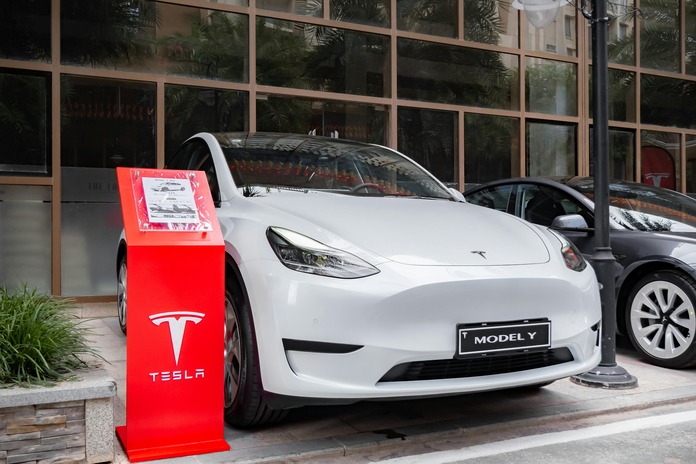Tesla (NASDAQ:TSLA) has long been at the forefront of electric vehicles (EVs), but its autonomous driving vision is where CEO Elon Musk believes the company’s future dominance lies. With Robotaxi Day approaching, all eyes are on Tesla’s autonomous driving capabilities, a sector it once hoped to revolutionize. However, growing competition from Alphabet’s (NASDAQ:GOOGL) Waymo raises questions about Tesla’s position in the self-driving car race. The question now is: can Tesla’s autonomous driving ambitions keep pace with Waymo’s growing dominance?
The Race for Autonomous Driving: Tesla vs. Waymo
The competition in the autonomous vehicle (AV) industry has intensified in recent years, with companies such as Waymo, backed by Alphabet, leading the charge. Waymo has successfully deployed fully self-driving taxis in multiple U.S. cities, including Phoenix and San Francisco, where the public can hail driverless rides. These real-world applications have garnered significant attention, further establishing Waymo as the frontrunner in the AV space.
On the other hand, Tesla’s journey toward autonomy has been a more complex one. Despite Elon Musk’s ambitious claims—such as the 2022 statement that “owning anything but a Tesla would be like owning a horse”—Tesla’s Full Self-Driving (FSD) software is still in its beta phase and far from achieving full autonomy. While Tesla offers impressive driver assistance features, the dream of fully driverless cars seems more distant than initially predicted.
Tesla Faces Setbacks in Autonomous Driving
Tesla has been rolling out its FSD software for several years, but it is clear that the company’s vision of an entirely autonomous fleet is still in development. A key challenge lies in Tesla’s decision to rely on a vision-only approach, which contrasts with Waymo’s more robust sensor suite, including lidar and radar systems.
In addition, Tesla’s FSD system still requires active human supervision, as it isn’t considered safe enough to operate completely without intervention. As a result, despite Elon Musk’s frequent promises that a fleet of Tesla robotaxis is just around the corner, the technology continues to face significant hurdles. While Tesla is still viewed as a major player in the AV race, these delays have allowed competitors like Waymo to gain ground.
Waymo’s Rapid Advances in Self-Driving Technology
Meanwhile, Waymo is making rapid advances in deploying its autonomous vehicles in real-world environments. The company has been operating driverless taxis in several cities without a safety driver behind the wheel, a significant achievement that Tesla has yet to replicate on a wide scale. Furthermore, Alphabet’s backing has provided Waymo with the financial resources to continue expanding its operations, further solidifying its lead.
Waymo’s long-term investment in a multi-sensor approach, including lidar and radar, has proven successful in delivering a safer and more reliable self-driving experience. Recently, Waymo secured a $5 billion multi-year investment from Alphabet, ensuring the company’s ability to refine its technology and expand its driverless taxi operations into more cities across the U.S.
The Future of Tesla’s Autonomous Driving Vision
Tesla’s autonomous driving ambitions remain strong, despite the current setbacks. Elon Musk has repeatedly highlighted the importance of autonomy for Tesla’s future growth, particularly with his vision of robotaxis generating significant profits. Tesla has reduced the price of its FSD package and offered free trials for owners who have the necessary hardware, a move designed to increase FSD adoption.
However, analysts are beginning to question the timeline of Tesla’s autonomous driving vision. Some predict that the real benefits from Tesla’s AV initiatives may not materialize until the next decade, raising concerns about whether Tesla can maintain its leadership in the EV and AV industries.
Will Robotaxi Day Be a Turning Point?
As Robotaxi Day approaches, the pressure is on Tesla to show tangible progress in autonomous driving. While the company remains committed to achieving full autonomy, competitors like Waymo have already established themselves as leaders in the field. Tesla will need to overcome its current challenges and deliver on Musk’s promises if it hopes to compete in the increasingly crowded autonomous vehicle market.
In the end, while Tesla’s vision for autonomous driving is bold, it is becoming evident that the path to full autonomy will be longer and more challenging than initially anticipated. As Waymo continues to set the pace, the question remains whether Tesla can catch up and deliver on its promise of revolutionizing transportation.









